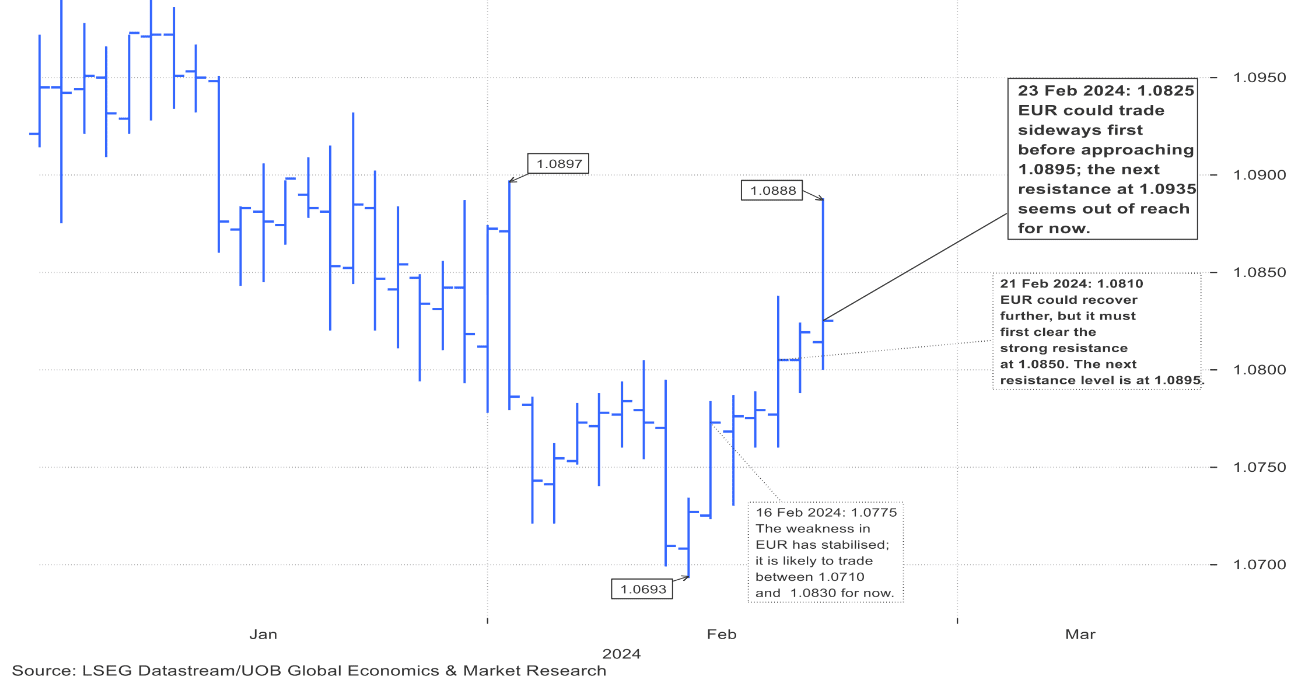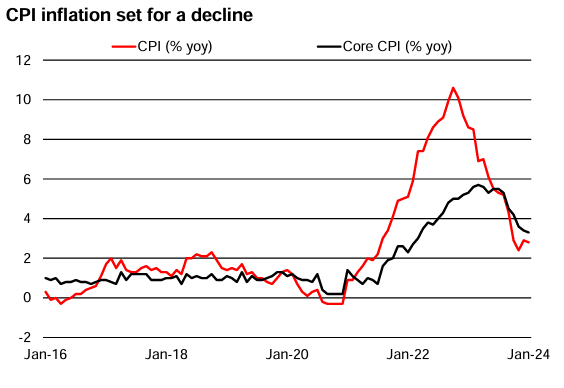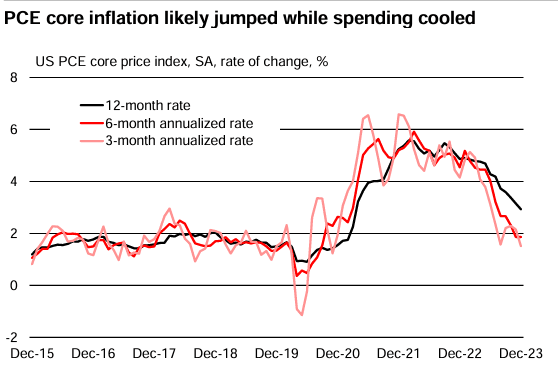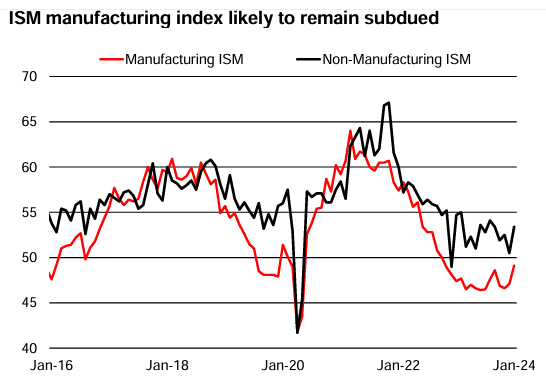EUR/USD Week Ahead Forecast: Supportive Month-end Vibes
- Written by: Gary Howes
- EUR/USD can see near-term strength
- Month-end USD selling could offer tactical opportunities
- But, upside likely to be limited
- Watch European inflation releases Thursday and Friday
- U.S. PCE inflation is key risk for USD

Image © Adobe Images
Last week's gain in Euro-Dollar was anticipated in last Monday's Week Ahead forecast edition, which noted that the U.S. Dollar side of the equation was due to a pullback as its 2024 outperformance was ready to fade.
The call rested on the belief that while the dollar is still favoured, some consolidation of the gains is required, and this would allow the euro-dollar exchange rate to edge higher.
This transpired, and the coming week will likely see more of the same; "the U.S. dollar index has been struggling to break north of 105. While incremental USD gains are still possible in the short run, we also see limits to USD gains," says Dominic Schnider, a strategist at UBS.
Friday is March 01 and we could see some opportunistic spikes in the Euro to Dollar exchange rate as month-end rebalancing occurs.
"The approaching February month-end could see USD-selling from real money investors who rebalance their global equity portfolios. Indeed, we note that months during which the global stock markets have rallied typically saw the USD come under pressure at month-end on the back of rebalancing hedging flows," says Valentin Marinov, Head of G10 FX Strategy at Crédit Agricole.
U.S. markets continue to print record-highs, egged on by the Magnificent Seven technology stocks and AI darling Nvidia, potentially making for some decent USD selling into month-end as portfolio managers rebalance FX exposure.
Looking at specific levels in the Euro to Dollar exchange rate, we would not be surprised to see a further cementing of positions above 1.0775, a level that forms the downside support area. We note the pair has not closed below here on a weekly basis since early December.
"Overall, as long as 1.0775 ('strong support' level previously at 1.0760) is not breached, EUR could approach 1.0895 again," says Quek Ser Leang, Markets Strategist at United Overseas Bank.
Image courtesy of UOB. Track EUR/USD with your own custom rate alerts. Set Up Here
Upside potential beyond this level (1.0895) is nevertheless likely to remain limited; "at this stage, the next major resistance at 1.0935 seems out of reach," says Leang.
"EUR/USD is already looking overvalued and it would take a renewed widening of the EUR-USD rate spread and/or further tightening of the peripheral yield spread to Bunds to see the pair appreciating on a sustained basis," says Marinov.
The main event for the Euro in the week ahead is the release of inflation data; Thursday sees Germany's inflation figures, released state-by-state, with the biggest tranche falling at 09:00 GMT, culminating with the all-German figure is at 13:00. (The expectation is 2.6% y/y.)
Often, if there is to be any inflation surprise in the Friday all-Eurozone release, it will have been foreshadowed by the German release, so don't be surprised if the Euro's big day is Thursday.
On Friday, the market looks for a headline Eurozone inflation rate of 2.9% year-on-year for February to be reported, down from January's 3.3%. A downside miss would firm European Central Bank rate cut bets, leading to a weaker Euro.
Upside surprises would push back against rate cuts and underscore the Euro's recent resilience against the Pound and Dollar.
Image courtesy of UniCredit.
"We expect these to show a further step down in inflationary pressures towards the 2% target. Before we get there, we will hear from President Lagarde on Monday as she comments on the ECB’s Annual Report," says Ellie Henderson at Investec.
"We hope for any indication of how ECB thinking has evolved since the latest meeting," she adds.
Dollar Week Ahead
The Dollar has been in the driving seat in 2024 as markets lower expectations for the number of rate cuts to be delivered by the Fed this year, thanks to above-consensus economic data releases that paint a picture of a strong economy.
We will need to see incoming data beat expectations by a handsome margin if this trade is to extend.
Preliminary U.S. GDP for the final quarter of 2023 is released Wednesday at 13:30 GMT; consensus looks for a reading of 3.3% year-on-year annualised, unchanged on the previous quarter. This is the second revision (despite the 'preliminary' tag it officially carries!) for this period and is unlikely to alter USD values.
Thursday also sees the weekly job claims data release, which offers insight into how the labour market is progressing; we have seen some decent FX reactions in the past weeks on misses in either direction.
However, it is the PCE inflation figures that will likely attract the market's attention as this is an inflation measure that the Federal Reserve is particularly interested in.
Image courtesy of UniCredit.
"PCE is the Fed’s favourite measure of inflation. A hotter-than-expected print should keep the greenback supported," says Fawad Razaqzada, an analyst at City Index.
The headline PCE is expected to have risen 2.8% year-on-year in January and 0.3% month-on-month, with any deviation from these expectations potentially moving the market.
Given the significant decline in rate cut expectations seen in 2024 due to upside inflation surprises, we expect the biggest USD reaction to be to the downside on any undershoot in the data.
Friday sees the release of the ISM Manufacturing PMI, often a market-moving event, where the market expects a reading of 49.5.
Image courtesy of UniCredit.








